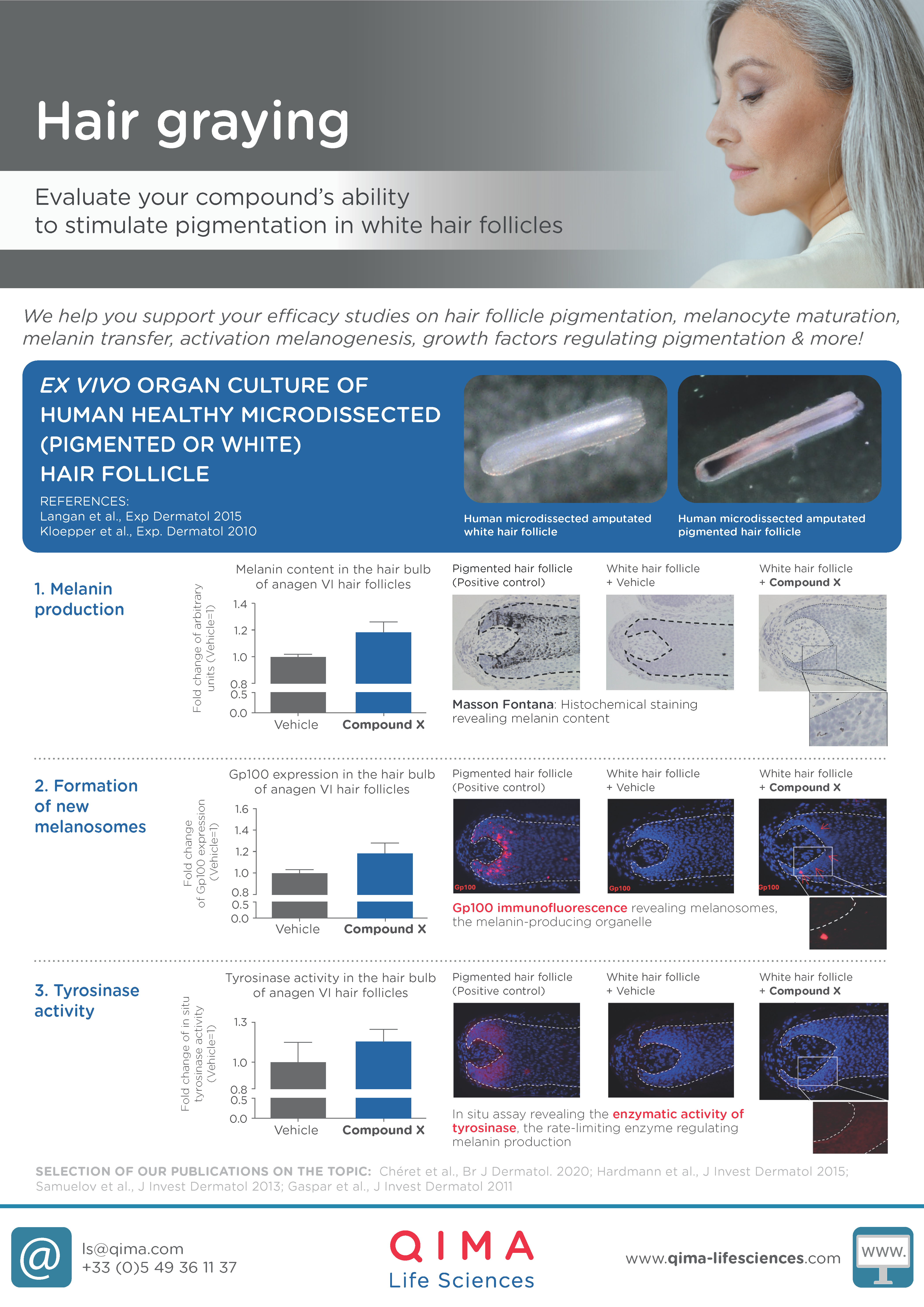Hair graying is closely associated with aging. This turns hair pigmentation into a major claim for the cosmetic industry.
Biologically, hair color depends on a specific pigment called melanin. Melanin, present in both skin and hair, is produced by specialized cells known as melanocytes.
These cells contain organelles called melanosomes, which are specifically responsible for the synthesis, storage and transfer of melanin to keratinocytes.
As a result, melanocytes produce melanin to color the keratinocytes of the hair shaft.
But as we age, melanin production in melanocytes decreases. And this lack of pigment turns our hair gray.
You’ve probably noticed that melanin production is a complex process involving several cellular pathways. This means that we can assess a compound’s impact on hair pigmentation in multiple ways.
Here at QIMA Life sciences, we have implemented innovative solutions to substantiate your compound or product claims.
Take a look at our
Hair Graying Flyer

Our Models & Assays To Address Hair Pigmentation
MODELS
QIMA Life Sciences has developed several in vitro and ex vivo models to help you evaluate your compound or finished product, including:
- Primary human epidermal (NHEM) and hair follicle melanocytes
- Ex vivo organ culture of human pigmented and gray hair follicles
- Human full thickness skin to investigate whether compounds/formulations (also via topical application) promote or inhibit hair or skin pigmentation.
READOUT PARAMETERS
We evaluate the following standard readout parameters by morphology, in situ zymography, immunohistology, and quantitative (immuno-)histomorphometry:
- Number of mature and immature melanocytes
- Melanin content
- Melanocyte dendricity
- Melanocyte differentiation
- Melanosome formation
- Expression and activity of the rate-limiting enzyme controlling the production of melanin
- Expression and phosphorylation of the master transcription factor regulating pigmentation
- Expression of proteins regulating melanogenesis
- Expression of growth factors regulating pigmentation and corresponding receptors
In addition, using RNAseq, qRT-PCR, and/or in situ hybridization, we can analyze:
- Expression of molecules involved in hair pigmentation
Also, we can assess these within specific compartments from skin or hair tissue sections following laser capture microdissection.
* Additional readout parameters are available, and customized experiments can be designed to meet the needs of our customers.
Scientific Publications on Hair Pigmentation
NEED MORE INFORMATION?
We are here to help!





